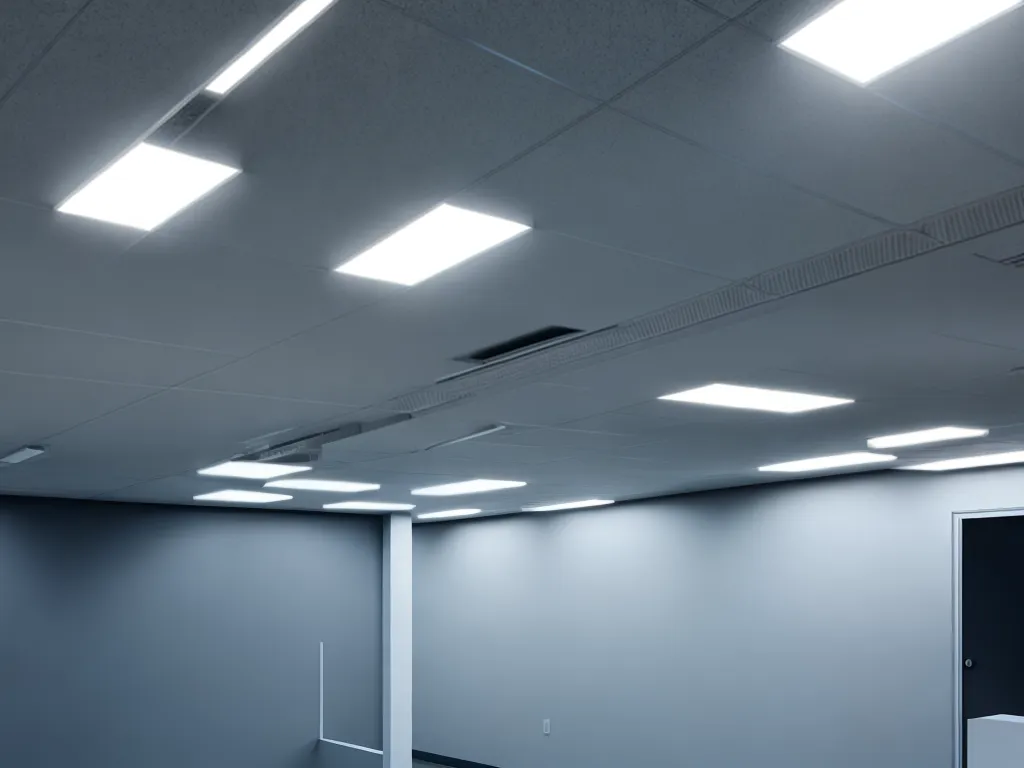
How to Test for Electromagnetic Interference in Commercial Lighting Systems
Electromagnetic interference (EMI) can cause major issues in commercial lighting systems. As lighting becomes more technologically advanced with LED and connected lighting systems, proper EMI testing is crucial. Here is a comprehensive guide on how to test for EMI in commercial lighting.
What is Electromagnetic Interference?
Electromagnetic interference (EMI) occurs when electromagnetic fields disrupt the operation of electrical or electronic systems. It can be caused by both natural and artificial sources.
Some common sources of EMI include:
-
Power lines - Power lines generate electric and magnetic fields that can couple onto nearby wires.
-
Motors and transformers - Rotating motors and transformers with changing currents create changing electric and magnetic fields.
-
Microwave devices - Leakage from microwave ovens and communications equipment can cause EMI.
-
Lightning - The electromagnetic pulses generated by lightning strikes can induce voltages and currents on power and communication lines.
-
Solar activity - Disturbances on the sun can lead to geomagnetically induced currents on the power grid.
-
Electrostatic discharge - The abrupt release of static electricity can create transient interference.
In lighting systems, EMI can cause issues like:
- Flickering lights
- Premature lamp failure
- Interference with control signals
- False tripping of sensors and breakers
- Damage to sensitive electronic components
Proper EMI testing allows lighting systems to be hardened against these disruptive effects.
EMI Testing Equipment
To test for EMI, specialized equipment is required to measure electromagnetic interference over a range of frequencies. Common EMI testing devices include:
-
EMI receivers - These measure radiated and conducted EMI from 9 kHz to 6 GHz. They can detect the strength and frequency of interfering signals.
-
Spectrum analyzers - Spectrum analyzers display frequency spectra and can identify EMI sources.
-
Near field probes - These probes measure electromagnetic fields in the near field before far field radiation occurs.
-
Current probes - They non-invasively measure current flowing through wires which helps identify conducted EMI.
-
Antennas - Antennas designed for EMI testing can measure electric or magnetic fields.
-
Signal generators - Used to produce signals to purposely create interference and test susceptibility.
-
Amplifiers - Increase the power of test signals.
-
** Data acquisition systems** - Record and analyze EMI measurement data.
Certified EMI test labs will contain specialized shielded rooms to isolate the equipment under test and eliminate ambient interference.
EMI Testing Methodology
EMI testing on lighting systems involves several important steps:
1. Visual Inspection
-
Carefully inspect the lighting system installation for proper bonding, grounding, and shielding.
-
Look for gaps in metal housings and improperly shielded cables that may allow EMI leakage.
2. Radiated Emissions Testing
-
This measures the EMI emitted into the surrounding environment.
-
The lighting system is placed in a shielded room and antennas scan for emitted interference over a defined frequency range.
-
Emissions should be below acceptable limits determined by regulatory standards.
3. Radiated Immunity Testing
-
This checks susceptibility to ambient EMI by bombarding the system with electromagnetic energy to simulate real interference.
-
Fields are generated using antennas or TEM cells and the lighting system is monitored for disruption.
-
Immunity testing ensures the system can operate reliably in expected electromagnetic environments.
4. Conducted Emissions Testing
-
Measures interference coupled onto power and control wiring which can propagate EMI throughout a facility.
-
Current probes placed on cables monitor emissions over frequency.
-
Identifying conducted emissions allows mitigation at the source.
5. Electrical Fast Transient (EFT) Testing
-
EFT pulses are short, fast bursts mimicking transients from inductive loads being switched on and off.
-
These pulses are coupled onto power lines to test response.
-
Verifies the system can tolerate typical transients present on commercial power grids.
6. Surge Testing
-
Voltage surges simulate those occurring during lightning strikes or load switching.
-
Surge waveforms are applied to power lines to ensure adequate immunity.
-
Verifies protection against rare, but destructive surge events.
7. Low Frequency Emissions
-
Power quality fluctuations such as dips, interruptions, and harmonics can cause EMI.
-
Power line monitors analyze parameters like power factor, crest factor, and Total Harmonic Distortion.
-
Ensures lighting can operate properly under typical power grid conditions.
Mitigating EMI
If EMI testing reveals problems, steps can be taken to mitigate interference:
-
Filtering - Low-pass filters prevent high frequency noise from entering sensitive devices. Line filters clean up the power supply.
-
Bonding - Ensure metal housings and conduit are properly bonded to the grounding system to prevent coupling.
-
Shielding - Use shielded, twisted pair cabling and place sensitive devices in shielded enclosures.
-
Distance - Increase distance between EMI sources and susceptible components.
-
Suppression - Snubbers, MOVs, and arc quenchers can suppress transients.
-
Twisting - Twisting wires minimizes coupling from magnetic fields.
With proper testing and mitigation measures, commercial lighting systems can operate reliably free from the disruptive effects of EMI. Careful testing identifies weaknesses and ensures lighting does not interfere with or get interfered with by surrounding equipment.